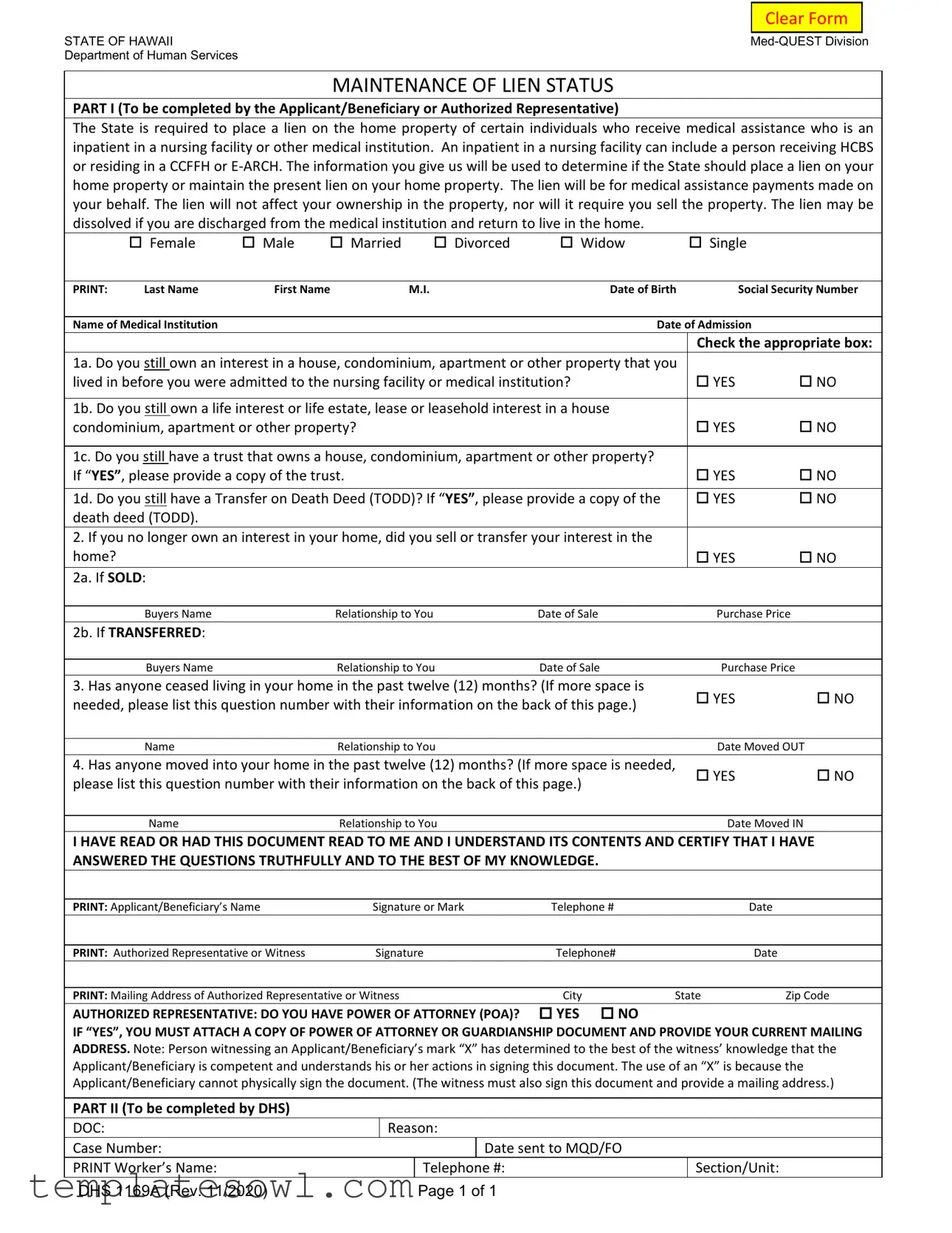The Dhs 1169 form, essential for determining lien status related to property and medical assistance, is often completed incorrectly by applicants. One common mistake occurs in the initial sections where individuals forget to check their gender or marital status. This may seem trivial, but it can impede processing and create delays.
Another frequent error arises when answering questions regarding property ownership. Applicants often answer “no” to ownership-related questions without fully considering any interests they may have held prior to their medical admission. Failure to accurately assess property interests can lead to complications with the lien determination.
Completing personal information also presents challenges. Miswriting names, social security numbers, or dates of birth can lead to mismatches in governmental databases. Consequently, these inaccuracies may prevent timely access to benefits and create additional burdens on the applicant.
When it comes to the relationship questions, people frequently overlook providing adequate details about buyers or individuals who have moved in or out of their homes. It is essential to note accurate names and relationships, as this information plays a crucial role in the assessment of the lien.
Additionally, some applicants neglect to attach required documents, such as copies of trusts or Transfer on Death Deeds. This omission can significantly delay the processing of the application and may even lead to an outright rejection of the form.
The section regarding an Authorized Representative often leads to confusion. Individuals neglect to include a mailing address for the representative, which is necessary for subsequent communications. This lack of information can hinder the Department’s ability to process inquiries or updates on the application.
Some people do not ask for assistance when they struggle with the legal jargon used in the form. Without understanding what is required, applicants risk providing incomplete or misleading information. Seeking help can mitigate this risk significantly.
Finally, individuals sometimes fail to read the certification statement carefully. Signing without fully understanding the certification can lead to unintended consequences if the information provided was not accurate. Ensuring thorough comprehension before signing is crucial.

